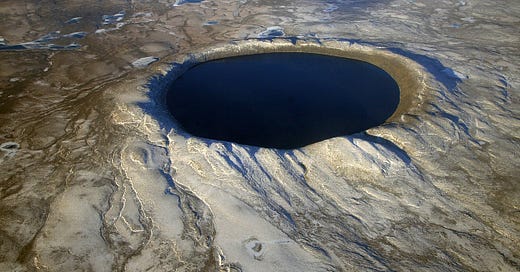Earth has been impacted by celestial bodies from outer space throughout its history. From the massive impact with the Mars-sized asteroid Theia 4.4 billion years ago that formed our moon, to the asteroid impact that formed the Sudbury Basin 1.8 billion years ago.
Of course, there is the asteroid impact that led to the demise of the dinosaurs 65 million years ago, and plenty of more recent impacts on our surface like the small one 1,000 years ago that formed a crater near Whitecourt, Alberta.
Some impact craters can be hard to find, due to erosion and the movement of the continents over eons.
But there are two that can are very easy to see right in Quebec.
The first impact crater was formed 214 million years ago when an asteroid five kilometres in diameter struck the Earth. It left a crater that covers 1,942 square kilometres that has long since been filled in by earth and water. Located in south-central Quebec, the crater is 100 kilometres across.
Today, it is known as Manicouagan Reservoir or Lake Manicouagan. It is believed that the name is of Innu origin meaning “where there is bark”. For the Indigenous, the area may have been a place for making canoes.
From space, it is clearly visible and has become known as the Eye of Quebec. The inner island plateau is called René-Levasseur Island and Mount Babel is the highest peak of the island at 952 metres.
The second impact site is Pingualuit Crater, formed about 1.4 million years ago when a small asteroid slammed into the Earth. Located in the region of Nord-du-Quebec, it is 3.44 kilometres in diameter. The crater rises 160 metres above the surrounding tundra and the lake is 400 metres deep. It is one of the deepest lakes in North America.
The lake also has some of the purest fresh water in the world, with salinity of less than three parts-per-million (the Great Lakes have a salinity of 500 ppm). It is also one of the most transparent lakes on the planet.
It was generally unknown to the outside world but the local Inuit knew of it. Today, it is sometimes referred to as The Crystal Eye of Nunavut.
During the Second World War, it was used by pilots as a navigational aid.





